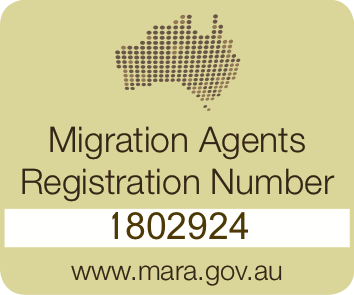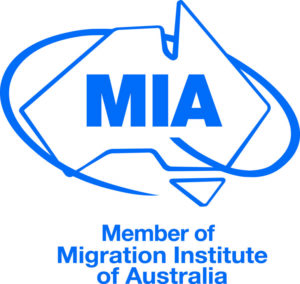FAQ
FAQ about Visitor and eVisitor visas
HOW LONG DOES IT TAKE FROM APPLICATION TO GRANT OF A VISITOR VISA?
The eVisitor visa is usually processed and granted within one to two working days. Visitor visas, on the other hand, can take much longer: processing times of two working days to several months are possible (depending on the purpose of travel and personal circumstances). In any case, we recommend that you do not wait too long to apply for a visa, to avoid any unpleasant surprises.
You can easily apply online via our website.
WHEN SHOULD I APPLY FOR MY VISA FOR AUSTRALIA?
HOW DO I GET MY VISA?
WHAT DIFFICULTIES MIGHT I ENCOUNTER?
In some cases, customers may not receive our e-mail messages – and thus their visas – as they end up in the spam folder. Please check your spam folder regularly or include us in your contacts list.
CAN I WORK WITH A TOURIST VISA?
No. A Visitor visa is not a work permit. Thus, as the holder of such a visa, you may not pursue any paid activity in Australia.
If you hold a Business Visitor visa, you are only entitled to undertake the following activities:
- making general business or employment enquiries
- investigating, negotiating, signing or reviewing a business contract
- activities carried out as part of an official government-to-government visit
- participating in conferences, trade fairs or seminars, as long as you are not being paid by the organisers for your participation
AM I ALLOWED TO STUDY WITH A VISITOR VISA?
Yes. As a holder of a Visitor visa you can study, take part in a course or advanced training for up to three months.
CAN I GET A TOURIST VISA FOR MORE THAN THREE MONTHS?
CAN I LEAVE AUSTRALIA TEMPORARILY AND RE-ENTER THE COUNTRY IF I HOLD A VISITOR VISA?
If you hold an eVisitor visa, you are allowed to leave and re-enter Australia during the validity of the visa. If you hold a Visitor visa, it depends on the terms of your visa grant.
DO I HAVE TO SEND MY PASSPORT IN WHEN APPLYING FOR AN EVISITOR OR VISITOR VISA?
WHAT IF I MADE AN ERROR IN THE VISA APPLICATION REGARDING MY PERSONAL INFORMATION?
WHY AM I NOT ASKED FOR AN ENTRY DATE IN THE APPLICATION FOR AN EVISITOR VISA?
You have 12 months to activate your visa. The visa is activated upon your entry into Australia. For this reason, you will not be asked for the planned entry date when applying, but you must ensure that you meet the relevant deadlines.
I HAVE A CRIMINAL RECORD – WHAT CAN I DO?
I AM ALREADY IN AUSTRALIA. CAN I EXTEND MY VISA?
In this case, you will need to apply for a Visitor visa and must explain the reasons for the extension of your stay. It is not possible to extend an eVisitor visa.
WHAT ARE THE ENTRY PROVISIONS FOR AUSTRALIA?
FAQ about Working Holiday visas and Work and Holiday visas
WHAT IS THE DIFFERENCE BETWEEN WORKING HOLIDAY VISAS AND WORK AND HOLIDAY VISAS?
These are different visa classes with different regulations. The most important difference is that the eligibility for one of these visa classes depends on your citizenship. There are distinct lists of countries eligible for these visas. There are no nationalities which are eligible for both visa classes. Consequently, provided that you do not have dual citizenship, you are eligible either for a Working Holiday visa or a Work and Holiday visa (or for neither of these because you are a citizen of a country that has no agreement with Australia regarding these visa classes).
AM I ALLOWED TO STUDY ON A WORKING HOLIDAY VISA OR A WORK AND HOLIDAY VISA?
HOW EXACTLY IS THE MAXIMUM AGE DETERMINED FOR VISA PURPOSES?
You can apply for a Working Holiday visa if you are aged between 18 and 30. This means that the date on which you submit your visa application must be after your 18th birthday and before your 31st birthday. You have to enter Australia within 12 months following the visa grant date. Once you enter Australia, your visa allows you to stay for the 12 months following the entry date.
WHY IS THERE AN AGE LIMIT FOR WORKING HOLIDAY VISAS AND WORK AND HOLIDAY VISAS?
The Working Holiday visa was introduced in 1975 with the objective of promoting youth exchange between countries that have concluded a corresponding agreement. The basic concept behind this agreement is to enable young people to broaden their horizons and gain intercultural experience. For this reason, this visa is not available to persons aged over 30.
IS IT TRUE THAT THE AGE LIMIT FOR A WORKING HOLIDAY VISA MIGHT BE RAISED TO 35 YEARS?
HOW LONG DOES IT TAKE FROM THE TIME OF APPLICATION TO THE GRANT OF A WORKING HOLIDAY VISA OR A WORK AND HOLIDAY VISA?
As a rule, most Working Holiday visas (subclass 417) are processed and granted within a few working days. However, processing times can differ significantly. According to the Department of Home Affairs, 75% of applications are decided within 18 days, and 90% within 36 days.
Processing times for a Work and Holiday visa (subclass 462) can be longer, especially if you hold a passport from a country in which the application process is still paper-based. 75% of applications for a subclass 462 visa are processed within 28 days, and 90% within 46 days.
In all cases, we recommend applying for your visa as early as possible, to avoid any unpleasant surprises.
CAN I LEAVE AND RE-ENTER AUSTRALIA IF I HOLD A WORKING HOLIDAY VISA?
You can leave and re-enter Australia during the validity period of the visa.
WHEN DO THE 12 MONTHS DURING WHICH I AM ALLOWED TO STAY ON A WORKING HOLIDAY VISA IN AUSTRALIA COMMENCE?
WHAT ARE "RURAL AREAS" IN AUSTRALIA?
You can only apply for a second Working Holiday visa (subclass 417), if you have worked at least 88 days in rural Australia in specified occupations during your first working holiday stay. Rural areas are areas outside major metropolitan areas, with low levels of population growth. The Department of Home Affairs determines these areas and adjusts them as needed. Currently, all postal code areas in Tasmania, South Australia, and the Northern Territory count as rural areas. In addition, the areas outside the major cities in New South Wales, Victoria, Queensland and Western Australia are also considered rural.
DO I HAVE TO SEND MY PASSPORT IN WHEN APPLYING FOR A WORKING HOLIDAY OR WORK AND HOLIDAY VISA?
WHAT IF I MADE AN ERROR IN THE VISA APPLICATION REGARDING MY PERSONAL INFORMATION?
In this case, the data on which the visa grant is based do not match the information in your passport. The result may be that you do not have a valid visa and will have to re-apply, thus incurring double costs. In the worst case, you may also be denied entry to Australia. Please make sure that your information is accurate and complete in order to avoid unnecessary complications.
If the visa has not yet been granted, it may be possible to make corrections. In this case, please contact us.
HOW DO I GET MY VISA?
WHAT ARE THE ENTRY PROVISIONS FOR AUSTRALIA?
FAQ about other visa classes
I WANT TO MIGRATE TO AUSTRALIA. WHERE DO I START?
Before you start packing your suitcase, first determine which visa classes you are eligible for and make a realistic assessment as to what your chances are for obtaining a visa.
Only when you know what options are realistically available and whether you can actually meet the requirements should you start preparing for a visa application and planning all the next steps.
We recommend our initial consultation services for this purpose: Visa Quick Assessment, Visa Consultation, Visa Expertise.
WHY SHOULD I WORK WITH A MIGRATION AGENT?
When applying for a visa, many details have to be taken into consideration since Australia’s immigration laws are extremely complex and constantly changing. Not only can mistakes prove very expensive (the Australian Immigration Department does not reimburse fees for failed visa applications), but the whole process is extremely time-consuming – and above all, a failed visa application can have a negative impact on future visa applications. In some cases, a rejected visa application may result in the suspension of new visa applications.
It is important that the visa application be handled correctly, and thorough preparation is crucial. The supporting documents you submit also play a vital role in the success of your application. Often, evidence is not sufficiently clear and comprehensible for the immigration authorities, including badly translated documents or insufficient or irrelevant evidence. This can lead to major problems. The Australian immigration authorities are not obliged to ask for clarification or amendments, but can reject an application due to insufficient justification or documentation.
A migration agent can protect you from such mistakes. Visapath will examine your case thoroughly in advance and develop the most appropriate application strategy along with you. We will compile the required documentation and evidence for submission to the Department of Home Affairs, and check for plausibility and consistency. Our team of registered migration agents are specialists in Australian immigration law. Learn more about us here.
By the way: When hiring a migration agent, it is imperative you make sure that the agent is registered and has a MARN number. Under Australian law, only registered migration agents are authorised to advise on Australian visa matters and immigration issues, and they are required to comply with defined standards.
HOW DOES IT WORK?
For some visas, especially in the case of points-test-based visa classes, an expression of interest must be submitted as a first step. If this is successful, you will receive an official invitation to submit a visa application. For other visas, the visa application can be made directly. The visa application is then reviewed by the Department of Home Affairs and eventually approved or rejected.
The amount of preparation required prior to a visa application or an expression of interest varies considerably depending on the visa category and is often very extensive. In some cases you will need a skills assessment; in others a sponsorship from relatives or Australian states; in some cases partnerships must be formally proven. These preparatory steps are crucial. You should plan enough time in advance to do this.
From the preparation stage, to the application, to the approval of your visa: We will guide you step by step through all stages of your application for an Australian visa.
HOW MUCH TIME DOES A VISA APPLICATION FOR AUSTRALIA REQUIRE?
WHY IS IT IMPORTANT WHETHER I HAVE HAD A VISA FOR AUSTRALIA BEFORE?
HOW MUCH WILL AN AUSTRALIAN VISA COST ME?
Australian visa fees vary considerably and are periodically adjusted by the Australian authorities. Further costs can be incurred, depending on the visa type: costs for skills assessments, sponsorship, translations, health checks, English language tests and the like may be incurred if these processes are required. The total sum of these expenses depends on the visa category and your personal situation.
When you use the services of Visapath Australia, we will provide you with a detailed list of fees as well as all other expected costs prior to your visa application.
DO I HAVE TO GIVE EVIDENCE OF SUFFICENT FUNDS IF I WANT TO MIGRATE TO AUSTRALIA?
This depends on the visa. For some temporary visas, the Australian Government requires the applicant to confirm that they have sufficient funds for the planned stay in the country and for subsequent departure. These include, for example, Student visas, Working Holiday visas or, in some cases, Visitor visas.
Even with permanent visas for private individuals, proof of sufficient funds can be requested. These are mostly state-sponsored visas. Some Australian states will only agree to nominate an applicant if they have sufficient funds to start their new life in Australia. The amount is determined by the state and may differ from state to state.
In addition, there are statutory minimum values for assets for Business visas and Investor visas.
WHAT IS A SPONSOR?
A sponsor in the context of Australia’s immigration laws is a person or institution that formally supports an applicant’s visa application. The sponsor nominates a person by name for the respective visa.
The requirements for acting as a sponsor depend on the respective visa class. For example, a sponsor of a Family visa must have a family relationship with the applicant; a Work visa sponsor must be a standard business sponsor.
Sponsorship is mandatory for some visa classes, such as for certain Work visas, Business visas and Investor visas, as well as Family and Partner visas.
HOW DOES THE POINTS-TEST SYSTEM WORK?
The points test is mandatory for General Skilled Migration visas.
By means of the points system, the application is examined according to certain criteria and is allocated points in the categories of age, language skills, work experience, and education. You have to score a certain total point sum in order to be invited to apply for the respective visa class.
WHAT IF I HAVE MORE THAN ONE JOB QUALIFIFCATION? WHICH SHOULD I USE FOR THE VISA APPLICATION?
DO I HAVE TO SPEAK GOOD ENGLISH TO GET AN AUSTRALIAN VISA?
For some categories of visa, a minimum knowledge of English is required (e.g., for most Skilled visas). The level of English proficiency required varies depending on the visa class.
Also, in the points test, your English language skill level is taken into account. Often, proof of a certain level of proficiency is required to achieve the required minimum points.
There is no English language requirement for Family visas.
More information can be found on our information page about the recognised language tests.
WHICH ENGLISH TESTS ARE RECOGNISED?
The Australian authorities accept the following English language tests for visa purposes:
- International English Language Testing System (IELTS): Academic and General
- Pearson Test of English (PTE) Academic
- Occupational English Test (OET)
- Test of English as a Foreign Language internet-Based Test (TOEFL iBT)
- CAE Cambridge Test: Certificate in Advanced English
More information can be found on our information page about the recognised language tests.
WHAT RESULTS DO I NEED TO ACHIEVE IN AN ENGLISH TEST?
That depends on the visa. The corresponding minimum levels are specified for each visa class. In the case of a points-based visa, a higher English proficiency result is sometimes required to qualify for the invitation to submit a visa application.
More information can be found on our information page about the recognised language tests.
WHAT ARE RURAL AREAS IN AUSTRALIA FOR VISA PURPOSES?
CAN I MIGRATE TO AUSTRALIA AS A PENSIONER?
Most permanent visa classes have an age limit of 45 or 55.
For persons over the age of 55, there is the option of a Family visa.
Access to the Investor Retirement visa was closed in 2018 for new applicants.
WHAT VISA DO I NEED IF I WANT TO DO A LANGUAGE COURSE IN AUSTRALIA?
That depends on the chosen course, its duration, and the respective provider. For most language courses, a Tourist visa or Working Holiday visa is sufficient (as long as the course does not exceed a duration of three or four months). For certain courses, a Student visa may be required. This is the case if the course lasts longer than three or four months or the course provider requires participants to have a valid Student visa.










